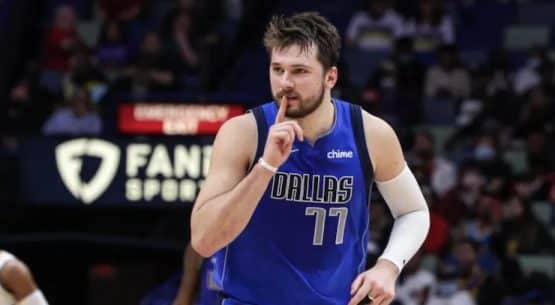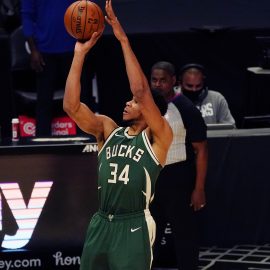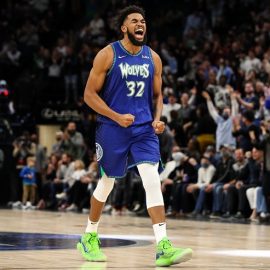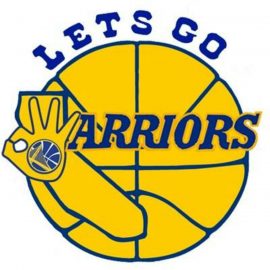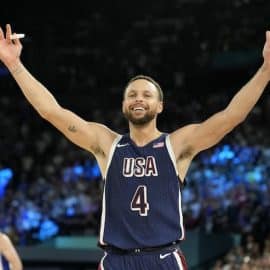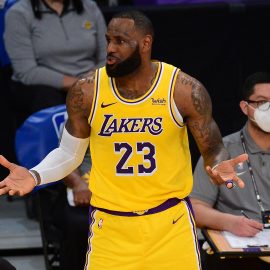The newly christened Gatorade League kicked off the season this weekend. Here are ten things you should know.
For years the NBA G League, formerly the Development League, has been a shadowy figure in the league’s multi-tiered organization. A group of teams flung across the country tested out new rules, gave fringe NBA prospects a chance to audition for the top-flight teams and brought basketball to communities that otherwise didn’t have access.
Now things are changing, as NBA teams realize the untapped potential of the league. Young players riding the pine could be sent into the “minor leagues” to receive playing time. If a team purchased or founded a team, then they could control playing time, scheme, player health and every other aspect of professional basketball life.
Now that nearly every NBA team has an affiliate in the developmental league, what used to be a separate, less-exciting version of the NBA is now becoming a tool to improve the product at the top. As teams pour money and experience into the league, the product becomes better at every level.
With games starting this past weekend across the G League, fans of basketball everywhere can tap into what the league has to offer. From watching their favorite prospects develop, to attending games at a fraction of the price, the G League has plenty to offer. What ten things should basketball fans know as the season begins?
1. New Name
Since the very first days of the NBA D-League, Gatorade has been present as a founding partner. But beginning with the 2017-18 season, that partnership has expanded to include, among other things, a fresh name.
The “NBA Development League” has now become the “NBA Gatorade League” and will be referred to as the “G League” in casual conversation. If the name sounds a little silly, it probably is, but it’s also indicative of a valuable partnership where Gatorade and the NBA will work together to improve player health in various ways.
And it’s at least a little catchy, right?
2. Four New Teams
As the G League rockets towards a full 30-for-30 partnership with the NBA, four new teams were founded this offseason. Both the Eastern and Western Conferences expanded by two for the 2017-18 season.
The Wisconsin Herd are suiting up in Oshkosh, Wisconsin as the affiliate of the Milwaukee Bucks. The Atlanta Hawks founded a new iteration of the Erie BayHawks that will move to Georgia in the near future. The Memphis Hustle wins the award for best team name as the Grizzlies’ new G League team. And finally the Agua Caliente Clippers set up shop for the Clippers on the West Coast.
Here is an updated map of the G League teams across the nation:
Now it’s time to get a team in the Pacific Northwest and fill in the remaining gray on that map. Just four NBA teams are without a direct affiliate. The Washington Wizards will have a team begin play next season, and the New Orleans Pelicans, Denver Nuggets and Portland Trail Blazers are all in discussions to do the same soon.
3. New Names Too
As NBA teams realize the benefits a G League team can offer, they are bringing them closer to home in order to facilitate players moving between the parent team and the G League squad. Of the four new teams, only the BayHawks will be a significant distance from the parent club, and that is only for one season, as the Atlanta Hawks look to bring them to Georgia next year.
Other organizations went after existing teams and simply re-branded. The former BayHawks team moved south to Lakeland, Florida to be closer to the Orlando Magic. The Minnesota Timberwolves tapped a successful franchise in Iowa, the Energy, and gave them a new name — the “Iowa Wolves” isn’t very creative, but everyone knows what team they’re tied to.
The final name change took place out West with one of the league’s more successful teams in recent years. The L.A. D-Fenders were a play off of the league’s name and a crucial role in basketball. But with the league now named the “G League” and their parent Lakers club not playing any defense, the team needed a new name. They begin this season as the South Bay Lakers.
4. Two-way contracts
Other than the name-change, the biggest new development for the G League is the addition of the two-way contract. Written into the new collective bargaining agreement, NBA teams can now carry two additional players on their roster on a special contract.
Those players’ rights and salary are controlled by the parent club, and they can spend up to 45 days with the top team. The rest of their seasons will take place in the G League, unless the parent club decides to convert the contract into a standard deal and cut another roster player.
Mike James is the highest-profile player on a two-way contract, as he has been playing heavy minutes for the suddenly surging Phoenix Suns. As the season progresses many of the other players on two-way contracts will have an opportunity to make an impact in the league.
5. Testing the Rules
The NBA G League is a place for NBA teams to try out new schemes and play calls, in addition to the player development and rehab opportunities it offers. But the league itself can also use the G League to try out new ideas.
In eight D-League games last season the league experimented with a four-man officiating crew, up from the three-man crews that now cover NBA games. This season every G-League game in November will feature a four-man team of officials as an extended test.
The Gatorade League will also try out a shortened overtime period (two minutes instead of five) and granting each coach a single “challenge” that can be used for specific calls throughout the game.
6. Defending Champs
Last season the Toronto 905 and new head coach Jerry Stackhouse dominated the league and at the end hoisted the trophy. In a league where players are continually being moved between teams and up-and-down from the NBA, sustaining consistent success is difficult.
Last year Stackhouse was able to form a team identity even with the shifting rosters, and was well-lauded for his ability to do so. But this year most of the key contributors from last year’s team are either seeing extended run for the Raptors — Fred Van Vleet, Bruno Caboclo — or playing overseas — Brady Heslip, Axel Toupane.
That sort of roster turnover will test whether a strong coach can sustain success in the G League, or if its continually-shifting nature will lead to greater parity and an inability to build a consistent contender. The early returns were against the Raptors 905, as they dropped their opener to the Grand Rapids Drive over the weekend.
7. For some players it works
The G League is not a true farm league such as baseball has, where teams are stocked with players owned by a parent team and preparing for their future day in the sun. For most of the players in the G League, they must beat the odds and win a spot on an NBA roster to sustain their careers.
While many do not, and find themselves playing overseas or pursuing other careers, the success stories sustain the grind for the rest. In past seasons, players such as Hassan Whiteside, Jonathon Simmons and Yogi Ferrell graduated from the D-League to the NBA.
This past offseason saw recent graduates enter (or re-enter) the league. David Nwaba, after a late-season run with the Lakers last season, is now starting games for the Chicago Bulls. Veteran Damien Wilkins sustained his career in the D-League before making the final roster for the Indiana Pacers. These players plant hope for those currently toiling in the G League.
8. Sophomore shockers?
New G League teams literally start at the bottom, forced to put together a competitive squad from scratch. From open tryouts to a draft of the current team’s castoffs, rookie teams have a long shot at putting together a contending roster from the jump.
But between ever-increasing ties with parent clubs, along with two-way contracts and affiliate players, the learning curve is much smaller than in years past. Teams can go from zero to contending in just one year.
Among the second-year teams, the Greensboro Swarm look the most dominant after their 35-point victory over the Canton Charge. The affiliate team of the Charlotte Hornets, head coach Noel Gillespie is doing something right this time around.
9. Watchability
The best way to watch a basketball game is live, and for those living close to a G League arena that’s the way to go. Tickets are affordable, the style of games is very similar to the NBA, and the players are almost as talented.
Now more than ever, there are alternative options for those wishing to watch as much basketball as possible, or to catch their team’s prospect spending time in the G League. A partnership with Facebook continues, with games frequently being showed on Facebook Live. Tuesday, November 7th will see four games broadcast on the social network.
In addition, a new avenue has opened up with the Worldwide Leader — that is, ESPN. 12 G League regular season games will be broadcast on ESPNU. The next one comes around on November 30th, as the Northern Arizona Suns travel to North Carolina to take on the Greensboro Swarm.
Whether you want to watch in person, on your television or via any of your electronic devices, the G League is more accessible than ever.
10. The future is coming
The reality for anyone connected to the G League is that things are always changing. Players are moved up and down, traded frequently, or even sign deals that take them to another continent entirely. Coaches are moved too – the Northern Arizona Suns just had to find a new head coach days before the season after the shuffle in Phoenix.
More than personnel, teams are seeing how schemes and plays turn out in live-ball settings. What does it look like to blitz the pick-and-roll every possession? Can this young wing handle the ball well enough to run the offense through him and have the guards back-screen for each other along the baseline? Before the parent team faces the Rockets, can their G League team test out a defensive adjustment on the Rio Grande Valley Vipers?
On a macro level things are continually in flux as well. New rules are tested out, the playoff structures are flipped on their heads and the future of the league is analyzed in a smaller sample. As advancements in player health, play-by-play tracking and even gear are invented, the G League provides a testing ground outside of the higher stakes in the NBA.
While not everything passes the tests, what you see in the G League is in many ways the future of the league. You’ll see that player in the NBA All-Star Game in five years; that coach has shown he’s ready to interview for openings in the NBA. A four-man officiating crew can be more accurate without calling appreciably more fouls. That play is kryptonite and will be used by Golden State in the Finals. And so on.
So pull up a schedule, pick out a game, and either in person or in your living room watch an NBA G League game. You’ll be surprised by how much it resembles the game you know and love, and it may just pull you in. If basketball is life, then more basketball is an even fuller life. And the G League has plenty to offer basketball fans of all ages.
Add The Sports Daily to your Google News Feed!


